If you are like us, then you don’t know where to start when it comes to other reading apart from farming magazines.
However, there is so much information out there that can help us understand our businesses, farm better and
understand the position of non-farmers. We have listed a few more books you might find interesting, challenge the
way you currently think and help you farm better.
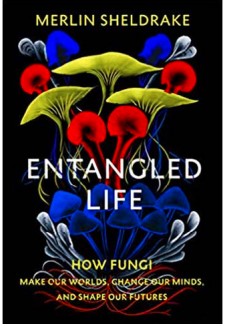
Entangled Life: How Fungi Make Our Worlds, Change Our Minds and Shape Our Futures
The more we learn about fungi, the less makes sense without them. Neither plant nor animal, they are found throughout the earth, the air and our bodies. They can be microscopic, yet also account for the largest organisms ever recorded. They enabled the first life on land, can survive unprotected in space and thrive amidst nuclear radiation. In fact, nearly all life relies in some way on fungi.
These endlessly surprising organisms have no brain but can solve problems and manipulate animal behaviour with devastating precision. In giving us bread, alcohol and lifesaving medicines, fungi have shaped human history, and their psychedelic properties have recently been shown to alleviate a number of mental illnesses. Their ability to digest plastic, explosives, pesticides and crude oil is being harnessed in break-through technologies, and the discovery that they connect plants in underground networks, the ‘Wood Wide Web’, is transforming the way we understand ecosystems. Yet over ninety percent of their species remain undocumented. Entangled Life is a mind-altering journey into a spectacular and neglected world, and shows that fungi provide a key to understanding both the planet on which we live, and life itself.
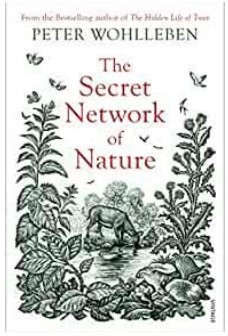
The Secret Network of Nature: The Delicate Balance of All Living Things
The natural world is a web of intricate connections, many of which go unnoticed by humans. But it is these connections that maintain nature’s finely balanced equilibrium. Drawing on the latest scientific discoveries and decades of experience as a forester, Peter Wohlleben shows us how different animals, plants, rivers, rocks and weather systems cooperate, and what’s at stake when these delicate systems are unbalanced.
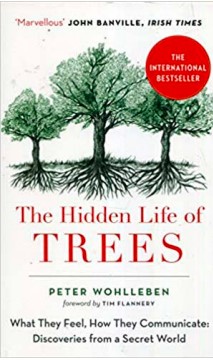
The Hidden Life of Trees: What They Feel, How They Communicate
Are trees social beings? How do trees live? Do they feel pain or have
awareness of their surroundings?
In The Hidden Life of Trees Peter Wohlleben makes the case that the forest is a social network. He draws on groundbreaking scientific discoveries to describe how trees are like human families: tree parents live together with their children, communicate with them, support them as they grow, share nutrients with those who are sick or struggling, and even warn each other of impending dangers. Wohlleben also shares his deep love of woods and forests, explaining the amazing processes of life, death and regeneration he has observed in his woodland.
A walk in the woods will never be the same again.

For the Love of Soil: Strategies to Regenerate Our Food Production Systems
Learn a roadmap to healthy soil and revitalised food systems for powerfully address these times of challenge. This book equips producers with knowledge, skills and insights to regenerate ecosystem health and grow farm/ranch profits. Learn how to:- Triage soil health and act to fast-track soil and plant healthBuild healthy resilient soil systemsDevelop a deeper understanding of microbial and mineral synergiesRead what weeds and diseases are communicating about soil and plant health-Create healthy, productive and profitable landscapes.Globally recognised soil advocate and agroecologist Nicole Masters delivers the solution to rewind the clock on this increasingly critical soil crisis in her first book, For the Love of Soil.
She argues we can no longer treat soil like dirt. Instead, we must take a soil-first approach to regenerate landscapes, restore natural cycles, and bring vitality back to ecosystems. This book translates the often complex and technical know-how of soil into more digestible terms through case studies from regenerative farmers, growers, and ranchers in Australasia and North America. Along with sharing key soil health principles and restoration tools, For the Love of Soil provides land managers with an action plan to kickstart their soil resource’s well being, no matter the scale.“For years many of us involved in regenerative agriculture have been touting the soil health – plant health – animal health – human health connection but no one has tied them all together like Nicole does in “For the love of Soil”! ” Gabe Brown, Browns Ranch, Nourished by Nature. “William Gibson once said that “the future is here – it is just not evenly distributed.” “Nicole modestly claims that the information in the book is not new thinking, but her resynthesis of the lessons she has learned and refined in collaboration with regenerative land-managers is new, and it is powerful.” Says Abe Collins, cofounder of LandStream and founder of Collins Grazing. “She lucidly shares lessons learned from the deeptopsoil futures she and her farming and ranching partners manage for and achieve.”The case studies, science and examples presented a compelling testament to the global, rapidly growing soil health movement. “These food producers are taking actions to imitate natural systems more closely,” says Masters. “… they are rewarded with more efficient nutrient, carbon, and water cycles; improved plant and animal health, nutrient density, reduced stress, and ultimately, profitability.”In spite of the challenges food producers face, Masters’ book shows even incredibly degraded landscapes can be regenerated through mimicking natural systems and focusing on the soil first. “Our global agricultural production systems are frequently at war with ecosystem health and Mother Nature,” notes Terry McCosker of Resource Consulting Services in Australia. “In this book, Nicole is declaring peace with nature and provides us with the science and guidelines to join the regenerative agriculture movement while increasing profits.”Buy this book today to take your farm or ranch to the next level!
Quality Agriculture: Conversations about Regenerative Agronomy with Innovative Scientists and Growers
An increasing number of farmers and scientists believe the foundational ideas of mainstream agronomy are incomplete and unsound. Conventional crop production ignores biology in favor of chemical interventions, leading farmers to buy inputs they don’t need. Fertilizer recommendations keep going up, pest pressure becomes more intense, pesticide applications are needed more often, and soil health continues to degrade. However, innovative growers and researchers are beginning to think differently about production agriculture systems. They have developed practices that regenerate soil and plant health and that deliver much better results than mainstream methods.
Using these principles, growers are able to decrease fertilizer applications, reduce disease and insect pressure, hold more water in the soil, improve soil health, and grow crops that are more resilient to climatic extremes, increasing farm profitability immediately. As a leading agronomist and teacher, John Kempf has implemented regenerative agricultural systems on millions of acres across many different crop types and growing regions with his team at Advancing Eco Agriculture. In Quality Agriculture, John interviews a group of growers, consultants, and scientists who describe how to think and farm differently in order to produce exceptional results in the field. Their remarkable insights will challenge you, encourage you, and inspire gratitude and joy for the rewards of working with natural systems.
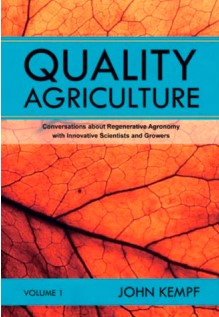
A Soil Owner’s Manual: How to Restore and Maintain Soil Health
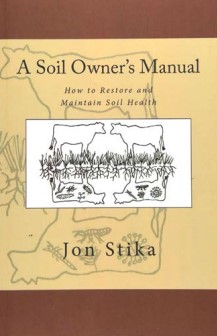
A Soil Owner’s Manual: Restoring and Maintaining Soil Health, is about restoring the capacity of your soil to perform all the functions it was intended to perform. This book is not another fanciful guide on how to continuously manipulate and amend your soil to try and keep it productive. This book will change the way you think about and manage your soil. It may even change your life. If you are interested in solving the problem of dysfunctional soil and successfully addressing the symptoms of soil erosion, water runoff, nutrient deficiencies, compaction, soil crusting, weeds, insect pests, plant diseases, and water pollution, or simply wish to grow healthy vegetables in your family garden, then this book is for you.
Soil health pioneer Jon Stika, describes in simple terms how you can bring your soil back to its full productive potential by understanding and applying the principles that built your soil in the first place. Understanding how the soil functions is critical to reducing the reliance on expensive inputs to maintain yields. Working with, instead of against, the processes that naturally govern the soil can increase profitability and restore the soil to health. Restoring soil health can proactively solve natural resource issues before regulations are imposed that will merely address the symptoms.
This book will lead you through the basic biology and guiding principles that will allow you to assess and restore your soil. It is part of a movement currently underway in agriculture that is working to restore what has been lost. A Soil Owner’s Manual: Restoring and Maintaining Soil Health will give you the opportunity to be part of this movement. Restoring soil health is restoring hope in the future of agriculture, from large farm fields and pastures, down to your own vegetable or flower garden.